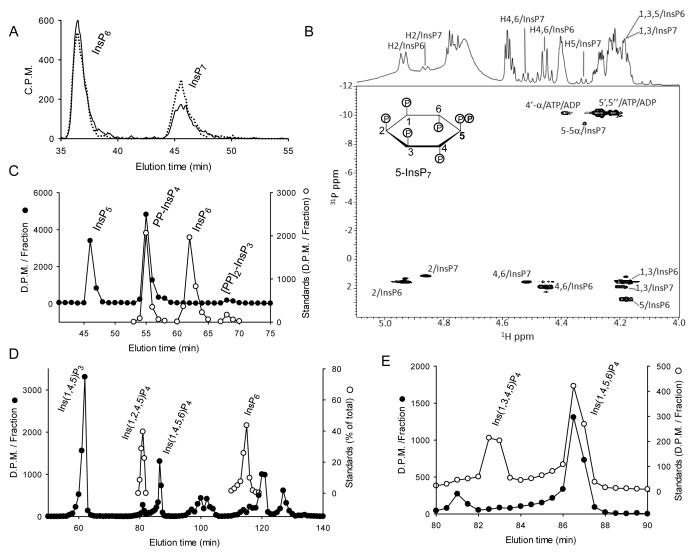Fig. 1. HPLC and NMR analysis of the products of Ins(1,4,5)P3 and InsP6 phosphorylation by EhIP6KA.
A, HPLC analysis (Partisphere SAX, Gradient 1; see Experimental Procedures) of InsP6 phosphorylation by either EhIP6KA (57 ng, 20 min; solid line) or HsIP6K2 (7.6 ng, 20 min; dotted line). B, NMR analysis of the products of the reaction between InsP6 and ATP catalyzed by EhIP6KA; the Fig. depicts an overlay of the 1D 1H and 2D 1H/31P HSQC spectra. The acquisition parameters are given under Experimental Procedures. Panel C, HPLC analysis (Partisphere SAX, Gradient 2; see Experimental Procedures) of the phosphorylation of approx. 9000 D.P.M. [14C]Ins(1,3,4,5,6)P5 by EhIP6KA (6 μg, 20 min, 50 μl; filled circles). Also shown are the elution of [3H]-labeled internal standards of PP-InsP4 and [PP]2-InsP3, as well as InsP6 (open circles). Panels D and E depict representative HPLC assays (90 min; 200 μl) that contained approx. 10,000 D.P.M. [3H]Ins(1,4,5)P3 plus 2 μg EhIP6KA. After quenching and neutralization, products (filled circles) were analyzed by Q100 SAX HPLC (Gradient 3). Panel D includes the elution positions of standards of [3H]Ins(1,2,4,5)P4 and [3H]InsP6 (open circles), determined in parallel HPLC runs. Panel E zooms in on the InsP4 region of the chromatograph; elution of internal [14C] standards of Ins(1,3,4,5)P4 and Ins(1,4,5,6)P4 are also shown (open circles).

